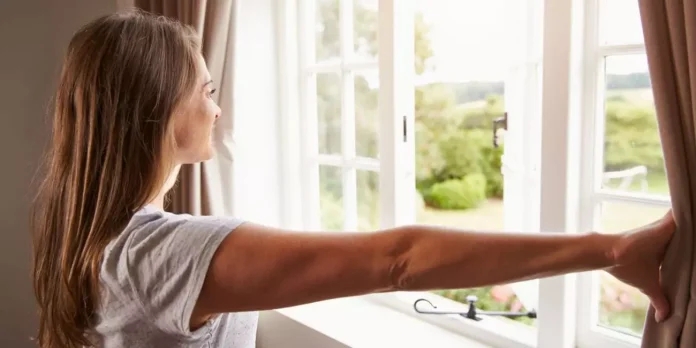Choosing to work at home or to telecommute can offer many benefits, including the opportunity to be more productive and to spend time with family and friends while you work. But there are also some problems that come along with working from home, such as poor air quality caused by things like dust mites, allergens and pet dander—problems that you can solve with just a few changes in your daily routine. Here’s how to improve home air quality and enjoy your home environment even more.
Most Common Causes of Indoor Air Pollution
The most common causes of indoor air pollution are tobacco smoke, combustion appliances, building materials and furnishings, cleaning products, central heating and cooling systems, and ventilation. Combustion appliances such as furnaces and wood stoves can also pollute the air in your home. These appliances release carbon monoxide, nitrogen oxides, and particulate matter into the air.
Building materials and furnishings such as asbestos-containing insulation, formaldehyde-emitting pressed wood products, and lead-based paint can also pollute indoor air.
Tobacco smoke
Secondhand smoke is especially harmful to children and infants. Their bodies are still developing, and they breathe more rapidly, so they take in more of the toxins in tobacco smoke.
Exposure to secondhand smoke can cause sudden infant death syndrome (SIDS), respiratory infections, ear problems, and asthma attacks in children. Pregnant women who are exposed to secondhand smoke are at greater risk for having a low-birth-weight baby.
In addition, babies whose mothers were exposed to secondhand smoke while pregnant may have decreased lung function or develop sudden infant death syndrome (SIDS).
If you’re pregnant or caring for an infant, try to stay away from places where people are smoking such as outside restaurants and bars. Make sure that you don’t allow anyone else to smoke around your child either!
Pets
If you have pets, be sure to vacuum regularly and keep their bedding clean. Pet dander and hair can contribute to poor air quality, so it’s important to keep them under control and don’t allow your pets to sleep on your bed or furniture. One study found that cats who sleep in the same room as humans may shed as much as twice the amount of fur than those who do not. Additionally, this fur can spread allergens throughout the home.
Cleaning: Dusting and sweeping will remove dust particles from the surfaces in your home which are often a major contributor to bad air quality.
Unvented home heaters
Most unvented home heaters are fueled by either natural gas or propane. These heaters do not have a chimney or any other type of venting system. The combustion gases from these heaters are exhausted directly into the room where the heater is located. Because there is no way for these gases to escape, they can quickly build up to dangerous levels.
The best way to improve air quality in your home is to install a vented home heater. Vented home heaters have a chimney or other type of venting system that exhausts the combustion gases outside of your home. This will help to keep the air in your home fresh and clean.
Radon gas
- First, make sure your home is well-ventilated. This will help to reduce the amount of radon gas that gets trapped inside.
- Second, seal any cracks or gaps in your foundation or walls. These can be hard to find, but they’re worth it!
- Third, install a high-efficiency particulate air (HEPA) filter and/or charcoal filter on your furnace venting system.
- Fourth, get a Radon Test Kit from a hardware store and test for radon levels if you suspect elevated levels exist in your area.
- Fifth, try not to stay indoors for too long on days when the air quality index is above 100.
- Finally, call an environmental engineer if you need assistance with these steps.
Mould and fungus
While mould and fungus are commonly found in the air, they can also be a source of indoor air pollution. In order to improve home air quality, it is important to remove mould and fungus from the home. This can be done by using an air purifier or by opening windows and doors to allow fresh air to circulate. Additionally, it is important to keep the home clean and free of dust.
Carbon monoxide
So, it’s present any time you use a gas stove, furnace, water heater, clothes dryer, or fireplace. It’s also in cars and trucks that have gas engines. Inhaling too much carbon monoxide can make you very sick, and it can even kill you.
That’s why it’s important to have working carbon monoxide detectors in your home. You can also improve your home’s air quality by venting appliances that produce carbon monoxide to the outside and by not idling your car in the garage.
Lead paint
If your home was built before 1978, there is a good chance it has lead-based paint. You can improve the air quality in your home by taking steps to remove lead-based paint. First, identify any areas of your home that have chipping, flaking, or peeling paint. These are the areas where lead-based paint is most likely to be found. Next, contact a professional who can safely remove the lead-based paint.
Once the lead-based paint has been removed, you can improve the air quality in your home by opening windows and doors to let in the fresh air. You should also vacuum regularly and dust with a damp cloth to remove any lead dust that may be present.
VOCs (volatile organic compounds)
VOCs are emitted as gases from certain solids or liquids. They can come from many common household products, like paint, cleaning supplies, and air fresheners. VOCs can also be released from burning fuel, like gas or wood. Some VOCs can cause health problems at high levels.
These effects may include headaches, dizziness, and nausea. The best way to reduce your exposure to VOCs is to use products that have low VOC levels or no VOCs at all. You can also open windows and doors to let fresh air in when using products that release VOCs.
Radon Testing in Your Home and In The Workplace
Radon is a colourless, odourless, and tasteless gas that comes from the natural breakdown of uranium in soil, rock, and water. It can enter your home through cracks in the foundation or other openings. Once inside, it can build up to high levels and become a health hazard. The EPA estimates that radon is responsible for 21,000 lung cancer deaths each year.
You can’t see or smell radon, so the only way to know if you have a problem is to test for it. The EPA recommends testing all homes for radon. You can buy a do-it-yourself test kit at most hardware stores or hire a qualified inspector to do the testing for you.
Conclusion
Home air quality is something that is often overlooked, but it is important to the health of you and your family. There are a few things that you can do to improve the air quality in your home. Ventilation is one of the most important things you can do to improve air quality. Make sure that you have proper ventilation in your home, and that any fumes or gases are vented outside.
Another way to improve air quality is to choose natural materials when possible. If you are remodelling or building, consider using materials like bamboo or cork instead of carpet or vinyl. You can also improve air quality by using natural cleaners and avoiding synthetic fragrances.


